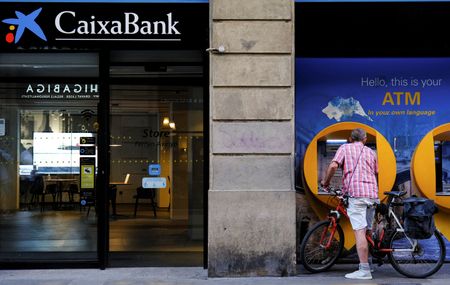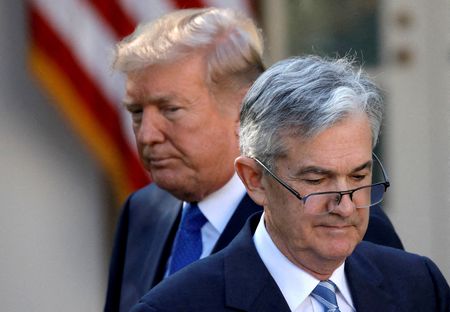By Jesús Aguado
MADRID (Reuters) -Lending income at Spain’s Caixabank remained under pressure in the second quarter due to lower interest rates, though the lender managed to partially offset the impact on its net profit with a rise in net fees and commissions.
While interest rates were rising until late 2023, Spanish banks benefited from higher lending rates and limited deposit payouts. However, this tailwind has reversed as interest rates have been falling in the past year.
Caixabank’s net interest income – a measure of earnings on loans minus deposit costs – fell 5.6% year-on-year to 2.64 billion euros ($3.05 billion), compared with 2.63 billion euros forecast by analysts. Compared with the previous quarter, NII fell just 0.4%.
On Wednesday, the country’s biggest bank by domestic assets reiterated that it expected a mid-single digit decline in 2025, compared with the 11.11 billion euros booked in 2024.
It also said that it expected NII improvement to accelerate from the second half of 2026 thanks in part to a steady control in cost of deposits.
For the second quarter, net profit fell 11% year-on-year to 1.48 billion euros, still above analysts’ forecasts of 1.38 billion euros, after booking a charge of around 148 million euros against the renewed banking tax, around a quarter of the annual amount of around 600 million euros.
Last year, the bank booked the entire 493 million euros annual cost in the first quarter.
A rise of 3.5% year-on-year in fees and increase of 5.8% in its insurance revenues, as banks aimed to lift non-core banking revenue, helped it raise its target for its return on equity ratio (ROTE), a measure of profitability, to above 16% for 2025 from a previous “around 16%”.
It also amended its 2025 guidance for cost of risk, which measures potential credit losses, to around 25 basis points from a previous “lower than 30 bps” goal.
At 0705 GMT, shares in Caixabank fell 1% while Spain’s blue-chip index was down 0.5%.
($1 = 0.8651 euros)
(Reporting by Jesús Aguado; Editing by Inti Landauro, Emma Pinedo and Kim Coghill)











